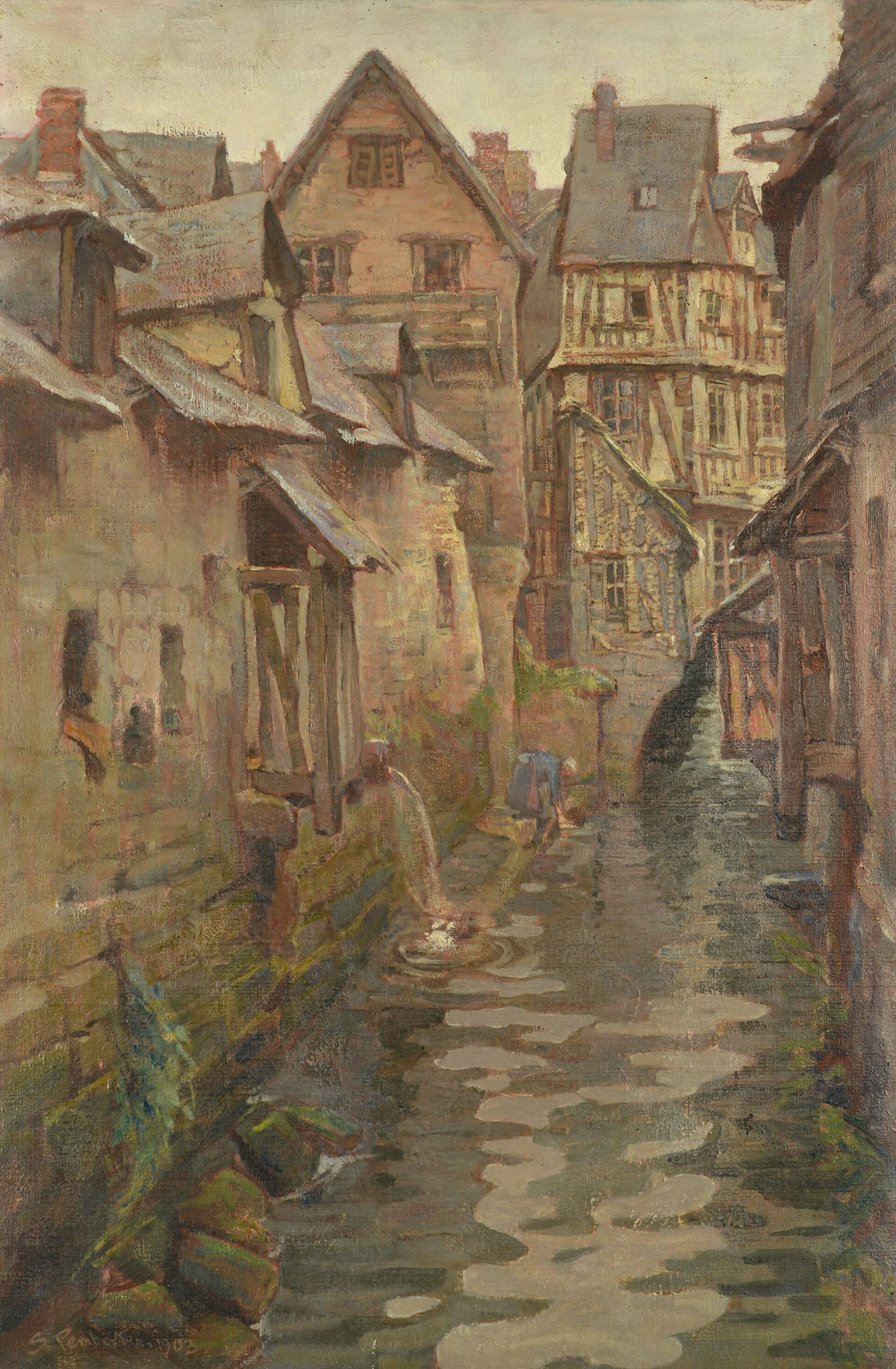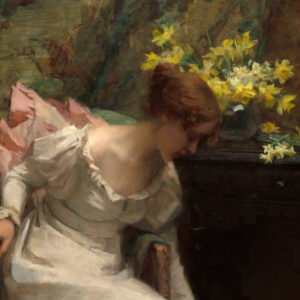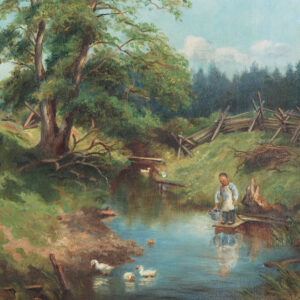Caudebec-en-Caux 1903

Sophie Pemberton, Caudebec-en-Caux, 1903
Oil on canvas, 76 x 50.7 cm
Art Gallery of Greater Victoria
Caudebec-en-Caux was a favoured locale on the north bank of the Seine River for Impressionist painters such as Camille Pissarro (1830–1903) and Eugène Boudin (1824–1898). In the summer of 1903 Pemberton, her sister Susie, and their mother toured Normandy at a leisurely pace, and the girls rode their bicycles in the fine weather. To “sketch” the image in this “dream of a place,” Pemberton set up her easel on a small stone bridge over what had originally been a narrow road with stone and timber houses until the Rivière Sainte-Gertrude, which meanders through the town, spilled its banks at high tide and claimed it.
-
LEFT: Postcard image of a street in Caudebec-en-Caux, c.1905
Photographer unknownRIGHT: Frances Hodgkins, Caudebec-en-Caux, 1901
Watercolour, 50.4 x 32 cm
Private collection -
Emily Carr, Crécy-en-brie, 1911
Oil on board, 32.7 x 40.8 cm
Royal BC Museum, Victoria
Pemberton concentrated on the harmonious blending of stone, wood, and water, the slate rooflines, and the taupe clouds reflected in the slowly moving water. She saw a woman on a washing platform and noted the high drains spouting water. Dilapidated yet arresting rooflines provided variety in texture—a challenge and a stimulus for an artist who had previously focused on portraiture but was increasingly influenced by the Impressionist art she saw around her. Even on a hot August day, the shaded canal, wet stones, green algae water mark, and weathered, shuttered, half-timbered upper storeys seemed a world away from the bustling market square.
Vintage postcard photographs taken from a similar vantage point a few years later confirm the accuracy of her detail. In all respects, Caudebec-en-Caux marked a triumph of careful observation for Pemberton, yet she has chosen to apply paint thickly, employing a wide brush that enabled a richly textured impasto. In 1903 she produced a number of landscapes in a similar vein. “There is the ‘touch’ and ‘go’ in them,” wrote a critic the following year, “wrought by a single stroke of the brush.”
New Zealand artist Frances Hodgkins (1869–1947) visited the town two years before Pemberton. She too was charmed and completed a series of watercolour views with a similar palette. “With quaint picturesque streets & subjects in plenty for every day in the year… Caudebec is being most thoroughly painted,” she wrote. A decade later, when Pemberton’s Victoria acquaintance Emily Carr (1871–1945) moved to rural France, she also focused on a picturesque canal and women washing linen. Crécy-en-Brie, 1911, clearly shows her own acceptance of the Impressionist style.

 About the Author
About the Author
 More Online Art Books
More Online Art Books
 Acknowledgements
Acknowledgements